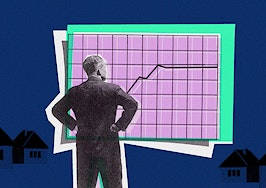- Zillow says low-income earners can expect to devote 22.7 percent of income toward mortgages, compared to high-income earners spending just 11.5 percent of income on mortgages.
- In a third of U.S. markets, low-income earners should expect to spend over 30 percent of income toward housing.
- Bottom tier buyers in San Francisco spend a whopping 68.4 percent of income on mortgages.
- In Chicago, low-income buyers can expect to spend 22.1 percent of income on mortgages.
Mortgage rates are nearing all-time lows, but that doesn’t mean everyone can afford to buy, according to a recent Zillow release.
The study says low-income earners in the U.S. can expect to devote an average of 22.7 percent of income toward mortgages, compared to high-income earners spending just 11.5 percent of income on mortgages.
Of course, buying a median-priced home eats up more of a smaller paycheck than a larger one, but Zillow categorized percentage of income based on home prices in three separate tiers. Essentially, the study does not assume low-income earners are buying the mid-range or priciest homes in any given market. Rather, Zillow assumes they are buying the cheapest homes.
Assuming low-income earners buy less expensive homes, median earners buy median-priced homes and high-income earners by homes in the top third of the market, Zillow says low-income earners still face the heaviest cost burdens.

Why are low income earners spending so much more, even when hunting for the cheapest properties? Entry-level homes are appreciating the fastest out of any price segment, according to multiple reports. Plus, the economy has done little to increase wages among low-income earners, meaning many tenants are spending more without earning more.
Where are low-income earners priced out?

In a third of U.S. markets, low-income earners should expect to spend over 30 percent of income toward housing. Traditionally, experts say the limit for affordability is spending 30 percent or less of income on housing, whether that be rental or mortgage.
Some cities are worse off than others.
In Los Angeles, low-income earners spend over three-quarters of their income on housing. By comparison, middle tier earners spend 39.5 percent and top tier earners spend 27.5 percent. Even the high earners in L.A. are dangerously close to spending more than they should.
Like L.A., San Francisco’s bottom-tier budgets are suffering the most, spending a whopping 68.4 percent of income on mortgages.
Middle-tier buyers in the City by the Bay are in the unaffordable range as well, spending 39.8 percent of income on mortgages. Only top-tier buyers in San Francisco are in the green, using just under 30 percent of income for mortgages.
In New York City, bottom tier buyers spend almost half (48 percent) of their income on owning a home. Middle tier and top tier buyers spend just over 25 and 18 percent, respectively, remaining below the unaffordable income-to-mortgage ratio.
Cities where bottom-tier buyers aren’t overspending
For the most part, most major U.S. metros see bottom-tier buyers spending larger percentages of monthly income on mortgage payments. Even so, many cities don’t require these buyers to spend more than 30 percent of their incomes.
Consider a relatively affordable big city like Chicago, where low-income buyers can expect to spend 22.1 percent on mortgages. Although not an ideal percentage compared to middle and high income earners, who spend just 13.8 and 10.9 percent of their wages, low-income earners in Chicago still have options.
Houston’s low-income earners also stay under the 30 percent line. Houston’s bottom-tier buyers spend just under 20 percent on mortgages, while middle-tier and top-tier buyers spend 12.3 and 9.8 percent, respectively.
Washington D.C., although pricey in nature, still allows entry-level buyers to stay within the affordability limit. Bottom-tier buyers in D.C. can expect to pay just over 26 percent on mortgages, while middle-tier and top-tier buyers hover around 15 percent.
With more wiggle room than D.C. homebuyers, low-income earners in Baltimore should expect to spend 24.1 percent of income on a mortgage. Middle- and top-tier buyers should plan to shell out 15 percent and 12.2 percent of their incomes on mortgages, respectively.
Miami’s low-income buyers are close to spending more than the recommended budget, devoting 28 percent of income toward the mortgage. Middle-tier and top-tier buyers only spend 19.7 and 15.7 percent, respectively.
For the most part around the country, mortgages are affordable, but low-income earners are smart to stay away from pricey coastal markets like L.A., San Francisco and NYC, if possible. In these cities, buying a home in the bottom tier leaves little room for savings, travel or loan payments.
In the U.S., income-to-mortgage percentages are well below peak levels. High-income earners spent the most in 2006, when they were using over 20 percent of income on mortgages. Low-income earners faced the biggest burden in 2007, spending nearly 40 percent of income on homeownership.
“From a high level view, mortgage affordability looks pretty good across most of the country, but it’s not good for everyone,” Dr. Svenja Gudell, chief economist at Zillow, said in a statement.













